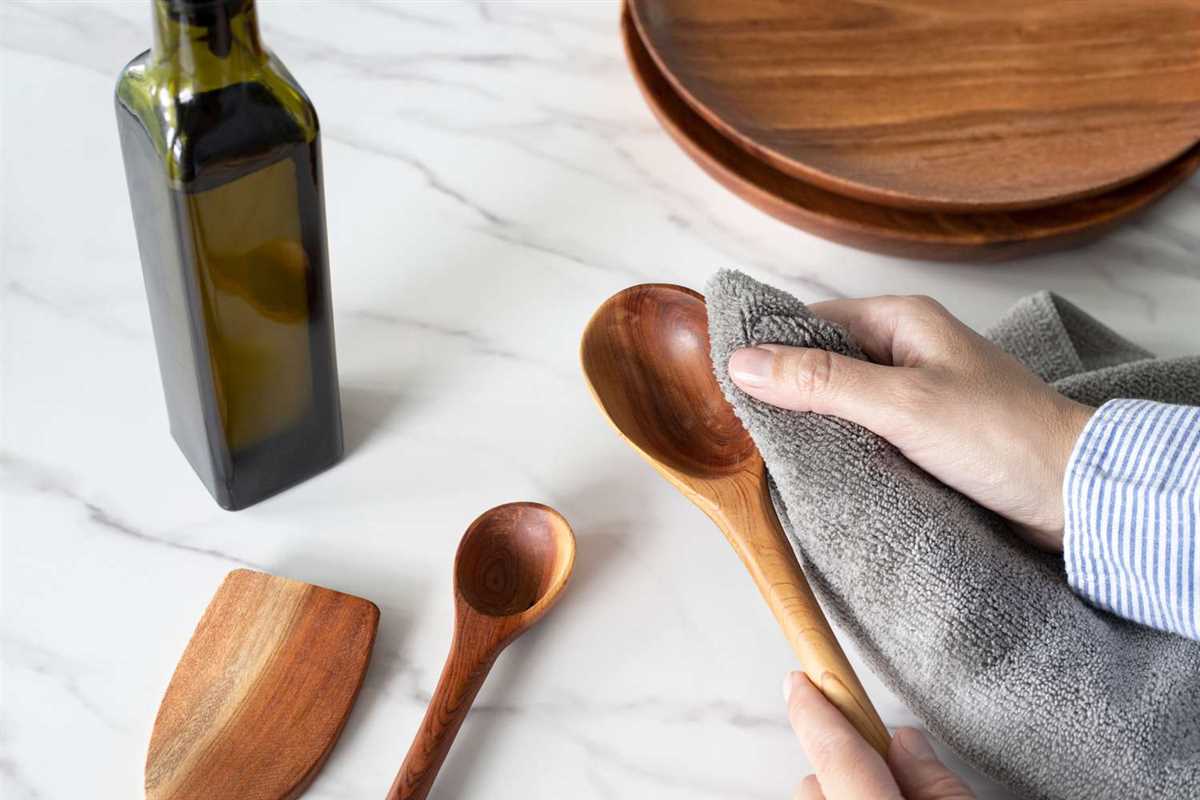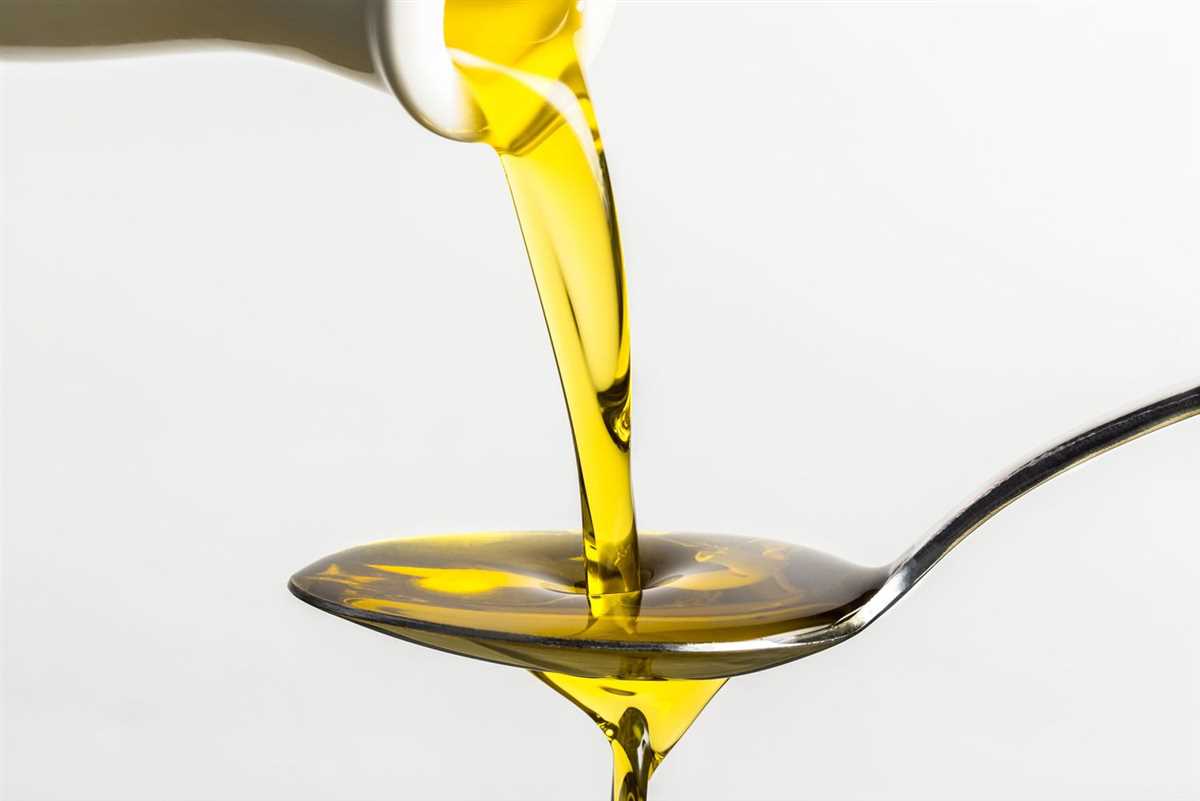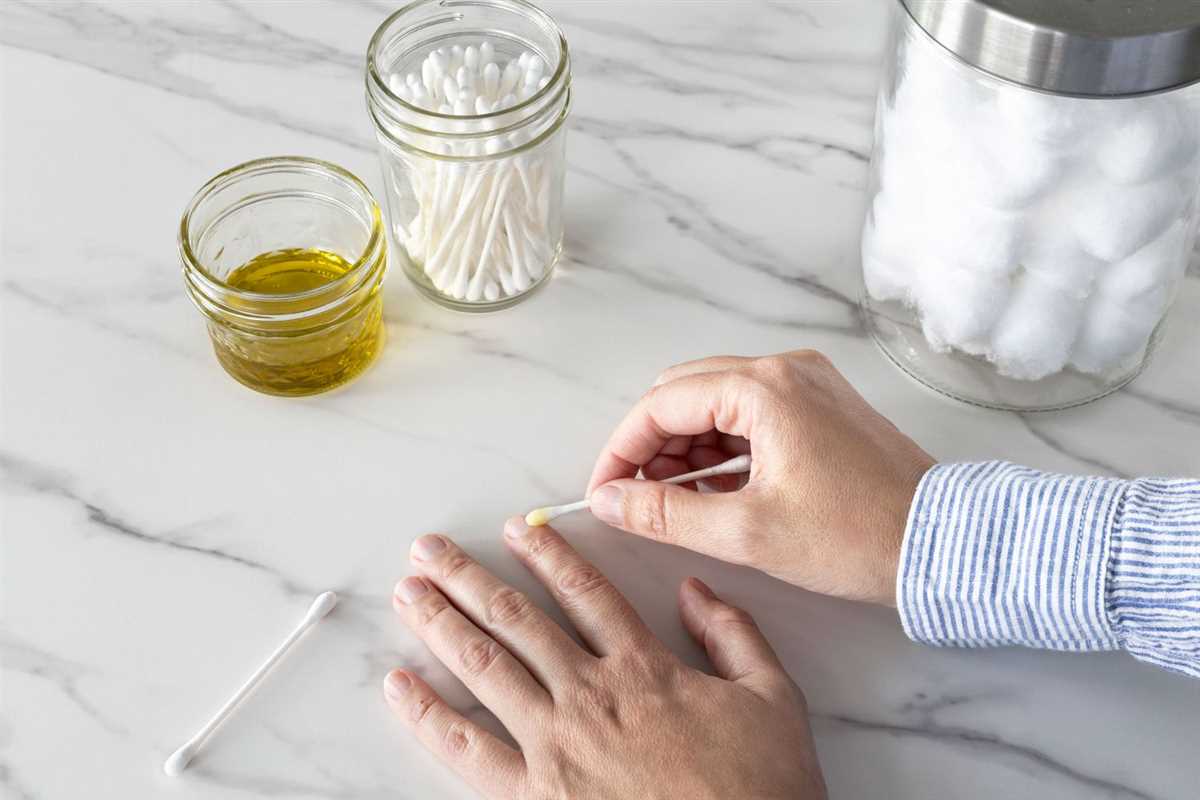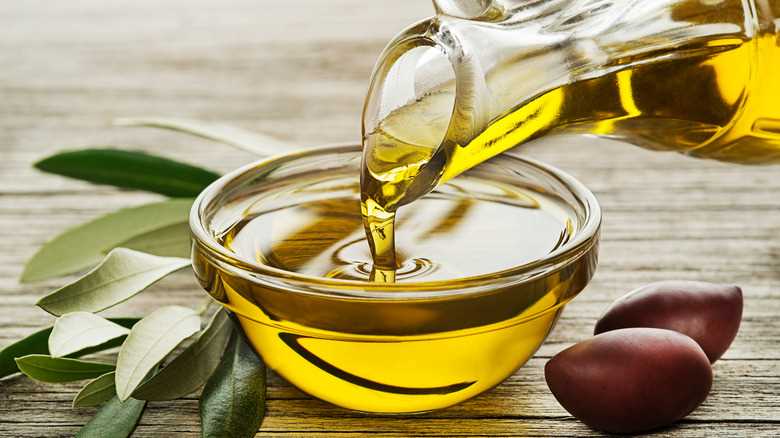




Olive oil is not just for cooking – it can also be a powerful and effective cleaning agent. Its natural properties make it a versatile tool in your cleaning arsenal. In this article, we will explore eight surprising ways you can use olive oil to keep your home sparkling clean.
1. Polish Wooden Furniture: Olive oil can work wonders on wooden furniture, providing a natural shine and conditioning the wood. Simply mix equal parts olive oil and lemon juice, and apply it to your furniture with a soft cloth. Buff it in gently to reveal a beautiful, glossy finish.
2. Remove Stains from Stainless Steel: Olive oil can help remove stubborn stains from stainless steel surfaces. Rub a small amount of olive oil onto the stain, and let it sit for a few minutes. Then, wipe it away with a clean cloth. The oil will help dissolve the stain, leaving your stainless steel looking as good as new.
3. Clean and Condition Leather: Olive oil is a great natural alternative to commercial leather cleaners. Apply a small amount of olive oil to a clean cloth, and gently rub it into your leather furniture, shoes, or bags. This will not only clean the leather but also condition it, keeping it soft and supple.
4. Revive Dull Metal Surfaces: Olive oil can bring back the shine to dull metal surfaces, such as faucets or kitchen utensils. Simply apply a small amount of olive oil to a cloth and rub it onto the metal. The oil will remove dirt and grime, leaving your metal fixtures sparkling.
5. Polish Silverware: Olive oil can be used to polish your silverware and remove tarnish. Create a paste using olive oil and baking soda, and apply it to your silverware with a soft cloth. Buff it in gently and rinse it off. Your silverware will regain its shine and look as good as new.
6. Remove Paint Stains: If you accidentally get paint on your skin or other surfaces, olive oil can help remove it. Apply a small amount of olive oil to the paint stain and let it sit for a few minutes. Then, gently scrub the area with a cloth or sponge. The oil will help loosen the paint, making it easier to remove.
7. Remove Sticky Residue: Olive oil can be an effective solution for removing sticky residue left behind by stickers or labels. Apply a small amount of olive oil to the sticky residue, and let it sit for a few minutes. Then, gently rub it away with a cloth or sponge. The oil will help dissolve the adhesive, making it easy to wipe away.
8. Clean and Shine Stainless Steel Appliances: Olive oil can be used to clean and shine stainless steel appliances, such as refrigerators or ovens. Apply a small amount of olive oil to a cloth, and wipe down the surface of your appliances. This will remove fingerprints, smudges, and grease, leaving them looking spotless and shiny.
These ingenious uses for olive oil show that it is not only a versatile ingredient in the kitchen but also a valuable tool for cleaning and maintaining your home. Give these tips a try and discover the power of this natural cleaning agent.
Surprising Uses of Olive Oil in Cleaning
1. Removing Sticky Residue
Olive oil can be used to remove sticky residue from surfaces such as glass, plastic, and metal. Simply apply a small amount of olive oil to a cloth or sponge and rub it on the sticky area. The oil helps to break down the sticky residue, making it easier to remove.
2. Polishing Furniture
If you’re looking for a natural and effective furniture polish, look no further than olive oil. Mix equal parts olive oil and lemon juice, and use a soft cloth to apply the mixture to your wooden furniture. The olive oil will nourish and moisturize the wood, while the lemon juice adds a pleasant scent.
3. Cleaning Stainless Steel
Olive oil can be used to clean and shine stainless steel appliances and sinks. Apply a small amount of olive oil to a cloth and buff the stainless steel surface in a circular motion. This will help remove fingerprints, streaks, and smudges, leaving your stainless steel looking as good as new.
4. Removing Crayon Marks
If your little ones have left crayon marks on your walls or furniture, olive oil can come to the rescue. Apply a small amount of olive oil to a clean cloth and rub it on the crayon marks. The oil will help break down the wax, making it easier to wipe away the marks with a damp cloth.
5. Cleaning Leather
Olive oil can be used to clean and condition leather furniture, shoes, and accessories. Apply a small amount of olive oil to a soft cloth and gently rub it into the leather. The oil will help moisturize the leather and keep it looking supple and shiny.
6. Removing Water Rings
If you have water rings on your wooden furniture, olive oil can help remove them. Mix equal parts olive oil and vinegar and apply the mixture to the water rings. Let it sit for a few minutes, then wipe it away with a clean cloth. The combination of olive oil and vinegar will help lift the water rings and restore the wood’s natural finish.
7. Cleaning Silver
Give your silverware a natural shine by using olive oil. Apply a small amount of olive oil to a soft cloth and rub it on your silverware. The oil will help remove tarnish and bring out the natural shine of the silver. Rinse the silverware with warm water and dry it thoroughly before storing.
8. Removing Sticker Residue
If you’re struggling to remove sticker residue from your belongings, olive oil can be a lifesaver. Apply a small amount of olive oil to the sticker residue and let it sit for a few minutes. Then, use a cloth or sponge to gently rub away the residue. The olive oil will help loosen the adhesive, making it easier to remove the sticker.
These are just a few surprising ways to use olive oil in cleaning. Give them a try and see how this versatile oil can make your cleaning routine more effective and eco-friendly.
Removing Stains from Stainless Steel
1. Vinegar and Olive Oil
Mix equal parts of vinegar and olive oil in a spray bottle.
Spray the mixture onto the stained area and let it sit for a few minutes.
Gently scrub the stain using a soft cloth or sponge.
Rinse the area with warm water and dry it with a clean cloth.
2. Baking Soda and Olive Oil
Make a paste by mixing baking soda and olive oil together.
Apply the paste onto the stain and let it sit for 15 minutes.
Scrub the stain gently using a soft brush, following the grain of the stainless steel.
Rinse the area with warm water and dry it with a clean cloth.
3. Lemon Juice and Olive Oil

Mix equal parts of lemon juice and olive oil in a bowl.
Dip a soft cloth into the mixture and rub it onto the stain in circular motions.
Let the mixture sit on the stain for 10 minutes.
Rinse the area with warm water and dry it with a clean cloth.
4. Club Soda and Olive Oil
Pour club soda onto a soft cloth.
Rub the cloth onto the stain, following the grain of the stainless steel.
Continue rubbing until the stain is removed.
Rinse the area with warm water and dry it with a clean cloth.
5. Olive Oil and Salt
Mix olive oil and salt to make a paste.
Apply the paste onto the stain and let it sit for a few minutes.
Gently scrub the stain using a soft cloth or sponge.
Rinse the area with warm water and dry it with a clean cloth.
6. Dish Soap and Olive Oil
Mix dish soap and olive oil in a bowl.
Dip a soft cloth into the mixture and rub it onto the stain in circular motions.
Let the mixture sit on the stain for 10 minutes.
Rinse the area with warm water and dry it with a clean cloth.
7. Ammonia and Olive Oil

Mix equal parts of ammonia and olive oil in a bowl.
Dip a soft cloth into the mixture and rub it onto the stain in circular motions.
Let the mixture sit on the stain for 10 minutes.
Rinse the area with warm water and dry it with a clean cloth.
8. Hydrogen Peroxide and Olive Oil
Mix equal parts of hydrogen peroxide and olive oil in a bowl.
Dip a soft cloth into the mixture and rub it onto the stain in circular motions.
Let the mixture sit on the stain for 10 minutes.
Rinse the area with warm water and dry it with a clean cloth.
Note: Always test any cleaning solution on a small, inconspicuous area of the stainless steel before applying it to the entire surface.
Caution: Avoid using abrasive materials or harsh chemicals that can scratch or damage the stainless steel surface.
Polishing Wooden Furniture

If you’re looking for a natural and effective way to polish your wooden furniture, olive oil can come in handy. Here are some surprising tips on how to use olive oil for polishing wooden furniture:
1. Remove Dust
Before you begin polishing your wooden furniture, make sure it’s free from any dust or dirt. Use a soft cloth or duster to remove any particles gently.
2. Create a Polish Mixture
In a small bowl, combine equal parts olive oil and lemon juice. Stir the mixture well to ensure the ingredients are evenly mixed.
3. Apply the Polish
Dip a clean cloth or a soft sponge into the polish mixture, making sure to wring out any excess liquid. Apply the polish onto the wooden furniture using gentle circular motions.
4. Rub and Buff
Continue rubbing the polish onto the wooden furniture until it starts to shine. For harder-to-remove stains or scratches, apply a bit more pressure while rubbing.
5. Remove Excess Polish
After polishing the entire wooden surface, use a clean cloth to wipe away any excess polish. This step helps prevent a sticky residue from forming on the furniture.
6. Let It Sit
Allow the polish to sit on the wooden furniture for a few hours or overnight. This will give the olive oil enough time to nourish and moisturize the wood.
7. Buff for a Shine
Using a clean cloth, buff the wooden furniture to give it a beautiful shine. The olive oil will help enhance the natural color and bring out the wood’s natural beauty.
8. Maintain Regularly
To keep your wooden furniture looking its best, repeat this olive oil polishing process every few months. Regular maintenance will help preserve the wood’s natural luster and keep it looking like new.
Remember, always test the olive oil polish on a small, inconspicuous area of the furniture before applying it to the entire surface. This will ensure that the polish does not cause any adverse effects or damage to the wood.
Reviving Leather Items
1. Leather Furniture
If your leather furniture is looking dull or worn out, you can revive it using olive oil.
- Start by dusting off the furniture with a soft cloth to remove any loose dirt or debris.
- In a small bowl, mix equal parts olive oil and vinegar.
- Dip a clean cloth into the mixture and gently rub it into the leather using circular motions.
- Continue rubbing until the entire surface is covered.
- Allow the mixture to sit on the leather for about 10 minutes.
- Using a clean cloth, buff the leather to remove any excess mixture.
2. Leather Shoes
To bring life back to your leather shoes, olive oil can be a handy tool.
- Wipe down the shoes with a damp cloth to remove any surface dirt.
- Pour a small amount of olive oil onto a clean cloth.
- Gently rub the cloth onto the shoes, paying attention to any scuffed or dry areas.
- Let the shoes sit for a few minutes, allowing the oil to soak in.
- Use a clean cloth to buff away any excess oil.
3. Leather Bags
Olive oil can also be used to revive dried out or dull leather bags.
4. Leather Jackets
If your leather jacket is starting to lose its luster, olive oil can help restore its shine.
- Wipe down the jacket with a damp cloth to remove any dirt or grime.
- Pour a small amount of olive oil onto a clean cloth.
- Using gentle circular motions, rub the oil onto the jacket, focusing on any areas that look dull or dry.
- Allow the jacket to sit for a few minutes to absorb the oil.
- Use a clean cloth to remove any excess oil.
- Finally, use a leather conditioner to protect and maintain the jacket’s shine.
Removing Sticky Residue
Sticky residue can be a nuisance to remove, especially if it’s been sitting for a while. However, olive oil can come to the rescue with its powerful cleaning properties.
To remove sticky residue, follow these simple steps:
- Gather your materials: You’ll need olive oil, a cloth or sponge, and warm water.
- Apply the olive oil: Pour a small amount of olive oil onto the sticky residue and let it sit for a few minutes. The oil will help to loosen the residue.
- Scrub gently: Using a cloth or sponge, gently scrub the area with the olive oil. Be sure to apply some pressure, but avoid scrubbing too hard, as it may damage the surface.
- Rinse with warm water: Once the sticky residue is removed, rinse the area with warm water to remove any remaining traces of oil.
- Dry the surface: Thoroughly dry the surface with a clean cloth or towel to prevent any water spots or streaks.
Using olive oil to remove sticky residue is effective for a variety of surfaces, including glass, plastic, wood, and metal. It’s a natural alternative to harsh chemicals and leaves a pleasant scent behind.
Remember to always test a small, inconspicuous area before applying olive oil to a larger surface to ensure compatibility and avoid any potential damage.
Cleaning and Conditioning Cutting Boards
Cutting boards are an essential tool in the kitchen, but they can harbor bacteria and odors if not properly cleaned and maintained. Olive oil can be a natural and effective way to clean and condition your cutting boards, ensuring they are safe for use.
Why use olive oil?

Olive oil has antibacterial properties that can help kill germs on cutting boards. Additionally, it can moisturize and condition the wood, preventing it from drying out and cracking.
How to clean your cutting board with olive oil:
- Start by washing your cutting board with hot, soapy water to remove any food particles or stains.
- Rinse the cutting board thoroughly.
- Apply a small amount of olive oil to a clean cloth or paper towel.
- Rub the olive oil onto the surface of the cutting board, making sure to cover the entire surface.
- Let the olive oil sit on the cutting board for a few minutes.
- Using a clean cloth or paper towel, buff off any excess oil.
Additional tips:

- For tougher stains or odors, sprinkle salt or baking soda onto the cutting board before applying the olive oil. Scrub the surface gently with a brush or sponge.
- If your cutting board is made of bamboo or other porous materials, be mindful of the amount of oil you use, as it can be absorbed more easily.
- Regularly cleaning and conditioning your cutting board with olive oil can help prolong its lifespan and maintain its quality.
By using olive oil to clean and condition your cutting board, you can ensure a safe and sanitary cooking experience while keeping your cutting board in great shape for years to come.
FAQ
Can olive oil be used for cleaning purposes?
Yes, olive oil can be used for cleaning purposes. It has various properties that make it effective for cleaning and polishing different surfaces.
What are some surprising ways to use olive oil in cleaning?
There are several surprising ways to use olive oil in cleaning. You can use it to remove stickers or glue residue, polish stainless steel, shine leather shoes, remove paint from your skin, clean wooden furniture, remove water rings from wood, clean and condition wooden cutting boards, and remove water stains from glassware.
How does olive oil help in removing stickers or glue residue?
Olive oil can help in removing stickers or glue residue by breaking down the adhesive properties of the glue. Apply a small amount of olive oil to the residue, let it sit for a few minutes, and then gently rub it off with a cloth or sponge. The oil will help loosen the residue, making it easier to remove.
Can olive oil be used to clean and condition wooden cutting boards?
Yes, olive oil can be used to clean and condition wooden cutting boards. To do this, mix equal parts olive oil and lemon juice or vinegar, and apply the mixture to the cutting board. Let it sit for a few minutes, then wipe off the excess with a clean cloth. This will help clean and condition the wood, keeping it looking new and preventing it from drying out.












